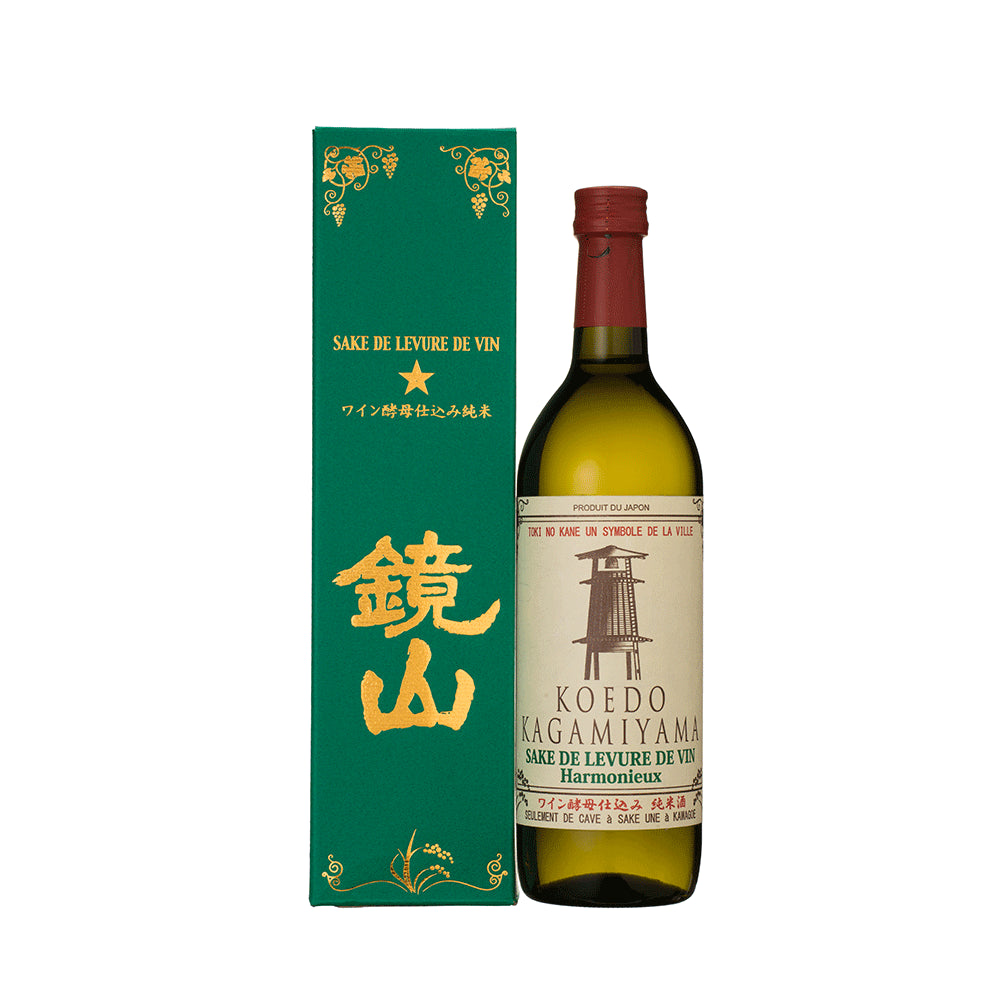-
 >
>
- Product list >
- Kagamiyama Wine yeast Junmai (720ml)
Kagamiyama Wine yeast Junmai (720ml)
詳しく見る
- *All prices shown are the product prices from the Japanpage:.
- *Product price can be shown in multiple currencies as reference values.
- *Payment should be made in Japanese yen.
- *After filling in delivery address, grand total (product price + shipping cost (packing + shipping + insurance) +tariffs & taxes) will be shown on the shipping cart page.
- *All prices shown are the product prices from the Japanpage:.
- *Product price can be shown in multiple currencies as reference values.
- *Payment should be made in Japanese yen.
- *After filling in delivery address, grand total (product price + shipping cost (packing + shipping + insurance) +tariffs & taxes) will be shown on the shipping cart page.
Using wine-making yeast and "Ayanominori" from Saitama Prefecture, a "shokumimai" (rice for normal eating), "Kagamiyama Wine yeast Junmai" is a Junmai based on an all new concept. Combining sake and wine making, the brewers can express a fusion of umami, sweetness and sour notes that was impossible to conceive using sake yeast, while adding a fruity, wholesome flavor that spreads over the palate that is unique to wines. The palate is mellow, with a sweetness that brings top quality eisweins to mind, but it also brings a refreshing acidity for a crisp after taste. A fresh new bottle for discerning sake lovers as well as Japanese sake novices. Bottled in wine bottles featuring a "Toki no kane" design, the symbol of Kawagoe where the brewer is based, this is an ideal bottle for gifts.
Pairing food proposed from Vendor
Cheese like parmigiano etc., desserts
About "Kagamiyama"
The name "Kagamiyama" derives from a "waka" (a traditional form of Japanese poetry) authored by poet Fujiwara no Teika in the late Heian period (12th century). A deeply flavored sake that brings the best out of the wholesome flavor of rice, it is also fragrant and floral, with a deep, elegant finish. Produced in small batches, it is made with the utmost care with nothing but the finest quality in mind.
Recommended temperature
- Atsukan (50 - 55℃)
- Jokan (45 - 50℃)
- Nurukan (30 - 40℃)
- Room temperature (15 - 20℃)
- Hanabie (10℃)
- Yukibie (5℃)
Type


Tag
Appearance
-
Clarity
Transparency
Hazy
-
Colour
Colorless
Dark brown
-
Intensity
Water
Deep
Nose characteristics
-
Intensity
Low
Strong
Taste characteristics
-
Light / Body
Light
Body
-
Sweet / Dry
Sweet
Dry
-
Simple / Complexity
Simple
Complexity
-
Acidity
Low
High
-
Umami
Low
High
-
Finish
Low finish
Long finish
Aroma and flavor
Detailed information
| Volume | 720ml |
|---|---|
| Size (L W H) | 7.0 x 7.0 x 28.5 cm |
| Weight | 1.2kg |
| Ingredients | Rice, Rice koji, Water |
| Region | Hokkaido |
| Alcohol content | 13%vol. |
|
Sake Meter Value
|
- |
|
Acid level
|
- |
|
Polishing ratio
|
60% |









